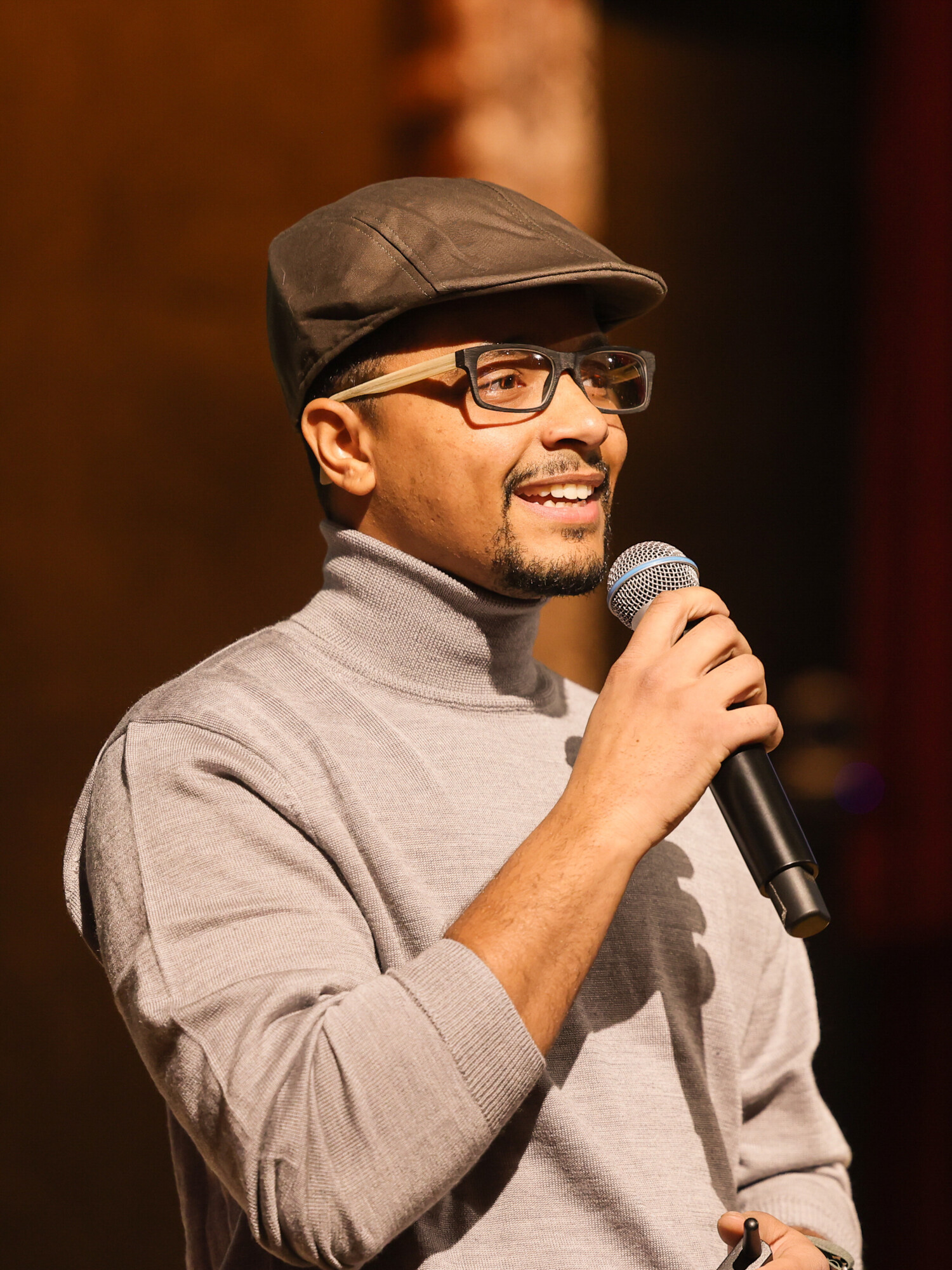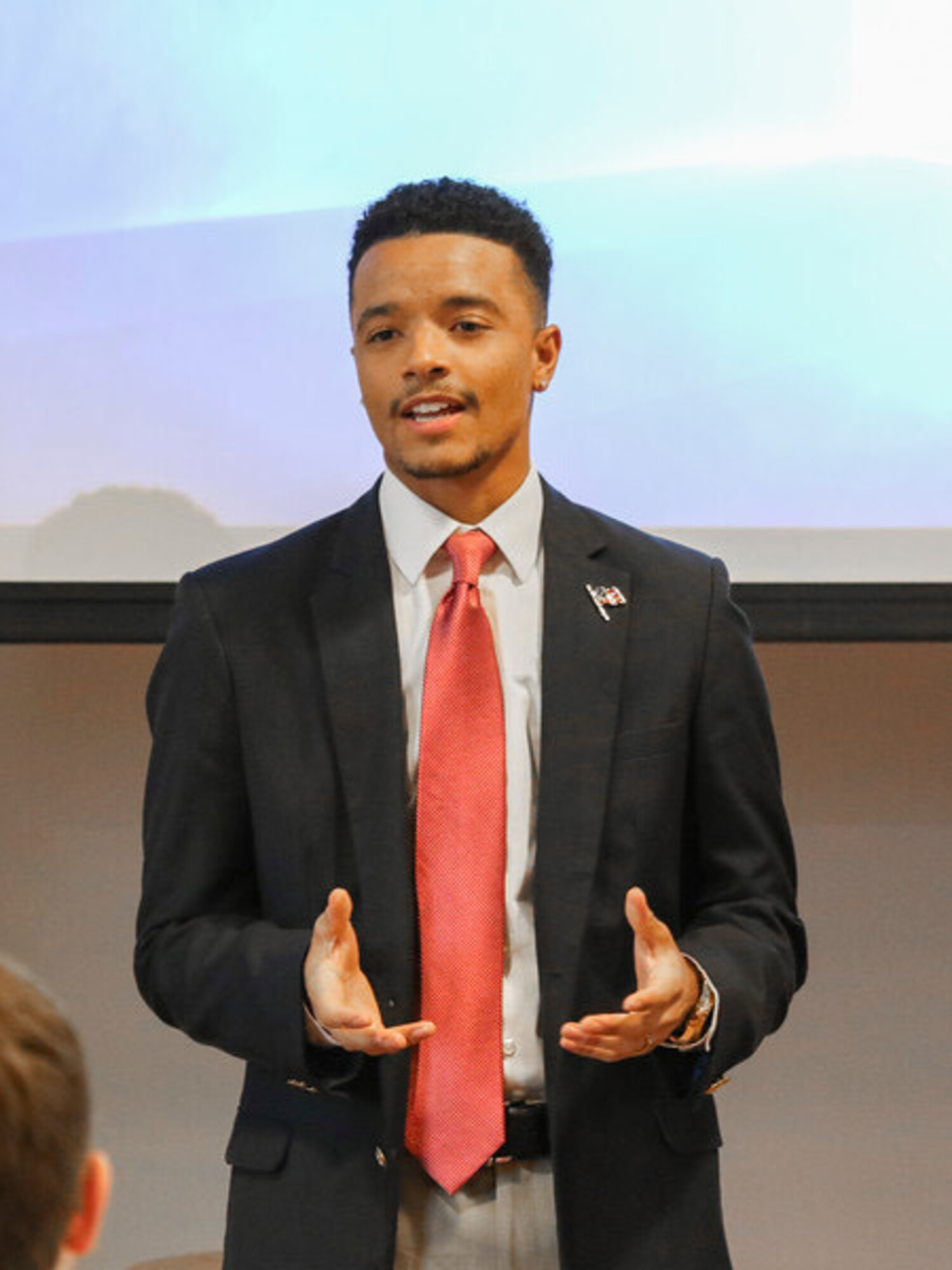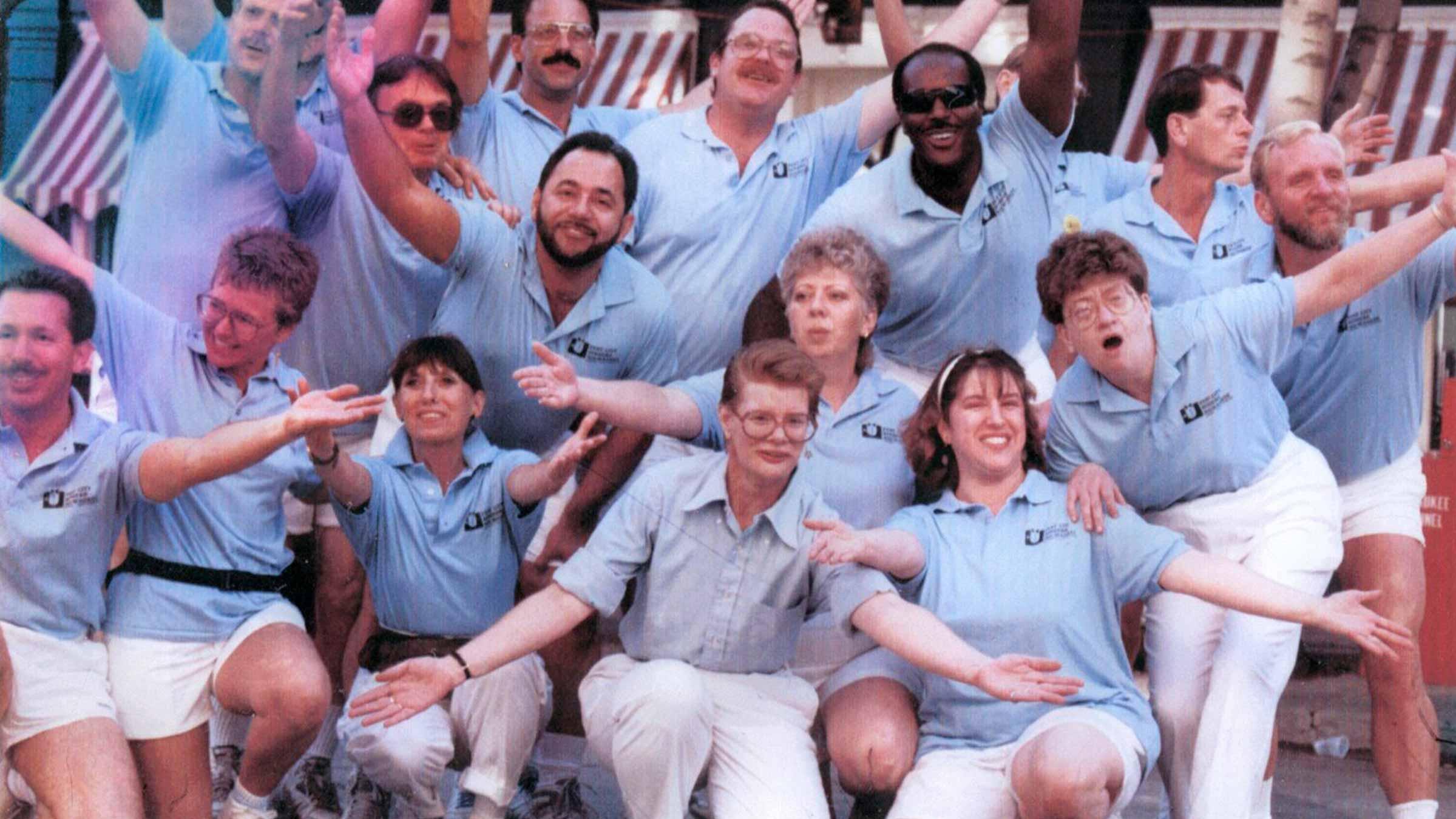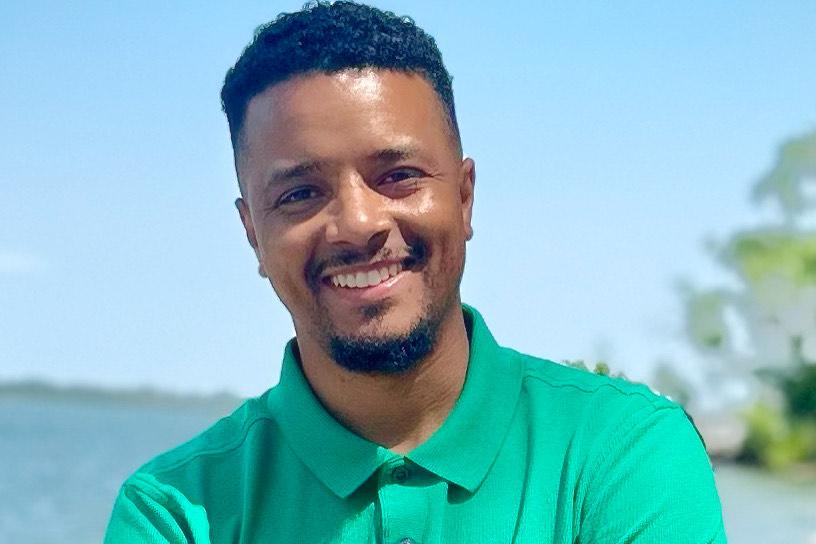
Dezjorn Gauthier: the future is ours

"I'm going to make this road as smooth as possible for the people coming up behind me."
Dezjorn Gauthier is a powerful advocate and a beacon of resilience who has confidently navigated his journey of identity throughout his life. He is undeniably secure in who he is and passionately committed to uplifting the Black trans community, both in his hometown of Milwaukee and beyond.
Born in1991, Dezjorn bravely began his physical transition on April 21, 2014.
Growing up, he often felt different and struggled to fit into the conventional female mold. He is profoundly thankful that his family created an environment where celebrating individuality was the norm. Through this support, he has come to see that his differences are not just aspects of his personality; they are integral to who he is at his core.
Entering high school marks the start of dating and a significant exploration of one's sexuality. During this pivotal time, he realized that he did not conform to traditional female roles. By late seventh or eighth grade, he identified as a lesbian, but by freshman year, he discovered that the term "lesbian" no longer resonated with him.
In 2005 or 2006, he turned to the internet in search of a term that accurately reflected his feelings. He initially came across the term "transsexual," but eventually found "transgender" to be the term that truly connected with his truth and made sense of his journey. He felt a strong desire to connect with others who shared similar experiences.
However, between 2005 and 2009, credible information about transgender identities was scarce online. His commitment to education and research led him to seek out reliable sources, which became an empowering pursuit.
Accepting and speaking truth
From 2009 to 2013, during his college years, he focused on uncovering medical and scientific insights related to transgender identities, hormone therapy, and medical transitions. He was fortunate to access valuable information from prestigious institutions such as Harvard and UW-Madison, as well as LGBTQ clinics like the Cleveland Medical Center. This journey solidified his identity as transgender. He embraced this term as a source of strength and began to share his authentic self with friends and family, marking a significant step forward in his life.
During this time, he opened up to his friends about identifying as transgender and shared that his pronouns would be he, him, and his. His friends responded positively, saying, “We were waiting on you.” Their reaction was extremely affirming, as they felt that Dezjorn’s transgender identity aligned perfectly with the person they knew and loved. A few friends, however, needed some education on the topic. There was no disagreement, just a lack of understanding about what being transgender meant, as it was a new term to them.
Once he explained it and they grasped the concept, they responded with, “Oh, that makes perfect sense.”
After receiving support from his close friends, who had become like family to him, he decided to approach his father's side of the family first. He believed this would be an easier route since they already understood his sexuality as someone who liked women. His father's family was very accepting and affirming of Dezjorn’s identity. While some education was still necessary regarding the meaning of being transgender and what it entailed, the overall response was welcoming.
Next, he turned to his mother's side of the family, starting with his cousins who were his age. This conversation went pretty smoothly as well. However, as he began to connect more with his aunts and uncles from his large family, he faced significant challenges. These challenges often stemmed from ignorance and the complexities of their religious beliefs, making it difficult for them to fully understand what he was experiencing.
Being biracial, he found himself in a unique position—on his mother's side, Dezjorn is the only one with white ancestry, and on his father's side, Dezjorn is the only one who identifies as Black. While his father's family was generally very accepting, he couldn't help but feel a sense of confusion and some resistance from the elders on his mother's side. He had become somewhat accustomed to this type of behavior, but it still weighed on him. Despite these obstacles, he was determined not to let them hold him back; he believed that understanding would eventually come with time.
One of his biggest concerns was how to share his truth with his mom. He knew she was struggling to accept the fact that he was attracted to women and his masculine expressions. It was painful to think about, especially because they shared common interests, like modeling, pageantry, and public speaking. He realized that if he could connect their interests, it might help her understand his identity as a transgender person. His goal was to gently introduce this aspect of himself in a language she could relate to, hoping it would open the door for deeper conversations about who he truly was.
His coming out story is deeply personal. Rather than having a quiet conversation with his mom over lunch, he chose to announce his identity through an international campaign called "Brothers, Sisters, Daughters, Sons," created by the renowned Bruce Weber in collaboration with Barneys New York. He was dressed in beautiful high fashion and participated in an international campaign for New York Fashion Week that highlighted transgender representation.
In an unexpected twist, his mom discovered his journey while watching CNN, as the campaign was featured in the news. This was a transformative moment that coincided with significant visibility for transgender issues, similar to when Laverne Cox appeared on the cover of Time magazine. Social media was also buzzing with discussions around gender identity and inclusivity at that time.
Guided by compassion
Imagine his mom, sitting in her living room, suddenly seeing her child on the television screen. He can only imagine the whirlwind of emotions she must have experienced in that moment. Naturally, he received a call from her soon after, and he knew it was a pivotal point for both of us.
When she looked at him and asked, "Is there something you want to tell me?" Dezjorn felt that the answer was already evident. At that moment, they took a brave step together to move forward. His mom needed to understand that, despite the physical changes he was going through, his true self remained the same deep inside.
The campaign he was part of wasn’t just about him; it was also an act of advocacy. He continued to model and present himself professionally while remaining passionate about education and fighting for equity and inclusion and related causes. Although his mom was taken by surprise, it became easier for her to grasp his journey once she recognized him as her beloved child, rather than seeing him as a controversial figure. She came to understand that this wasn’t just a phase or an effort to fit in; it was a genuine expression of his authentic self.
When his mother shared this news with others, they responded, "Yeah, you’re the last one to know." It was a bittersweet realization for her, acknowledging that she had missed an obvious truth that everyone else had already embraced. This is the essence of his story—the journey of coming out, which embodies the importance of living authentically and fostering compassion and understanding.
That’s how the documentary came to be, marking the beginning of his dedicated advocacy work in the community. He was driven by the glaring lack of representation; during his journey from 2005 to 2013, he saw very few people who looked like him. As a person with brown skin, he found it frustrating that, while there were prominent figures like Marcia P. Johnson, there was a noticeable absence of black trans men in the public eye. On the other hand, he recognized that Black trans women had begun to gain visibility, but there was a significant gap in representation for trans men.
His goal became clear: to change that narrative and ensure that everyone has a voice.
Demanding to be seen
Growing up, Dezjorn rarely saw Black and Brown trans people represented, making it difficult for him to find positive narratives about the trans community. Most available information was medical or scientific, devoid of any encouraging or hopeful messages. This absence of uplifting stories fueled his passion to help counter those negative perceptions and create a brighter, more inclusive future for others.
Dezjorn began to notice the representation of white trans men, such as Aiden Dowling and Buck Angel. However, he still didn’t see anyone who looked like him, which struck a chord. He knew there were others out there like him, and his mission became clear: he wanted to ensure that young people growing up could see someone who reflected their experience and could achieve success. It was essential for him to help break down barriers for future generations so they could avoid the challenges he faced.
One of the pivotal steps he took was getting involved with the Black Trans Advocacy Coalition (BTAC), led by Carter Brown and his wife. This was where he truly found his community. He connected with incredible individuals like Jevon Martin, the executive director of Princess Janae Place in New York and Jesse V. White of Milwaukee, WI. Together, they have become major business partners and accomplished a significant amount. Their collaboration is a testament to the power of connection and shared purpose.
He had the privilege of connecting with the late Monica Roberts, a remarkable Black trans journalist devoted to sharing the stories of Black trans individuals. Their bond began right when he transitioned; she was one of the first to highlight his journey, making him feel seen and valued.
Alongside her support, he found encouragement through Michael Munson of FORGE and Zao Church in Milwaukee, where Cameron and his partner, Jonah, reached out with open hearts. They reassured him that even if the Catholic Church did not recognize him, they did. This affirmation uplifted him, as his faith remains integral to his life. The incredible support he received in Milwaukee was nothing short of phenomenal.
Throughout the years, he became more visible in his community, and that visibility sparked a movement. People started coming forward, proudly saying, "I’m here too! I'm part of this community." One of the standout role models is Angelica Ross, now a powerful presence in the media world.
"Originating from Kenosha, Wisconsin, we quickly connected. She recognized that, despite being a trans woman, we share the same community. Angelica offered invaluable resources from her connections in the tech industry to support his efforts, and I knew this was a game-changer," said Dezjorn.
As more individuals rallied behind his business, it flourished. Inspirational figures like Laith Ashley, Jessica Zyrie, Elle Halo and Hope Giselle—who have also made their mark in mainstream media—stood with him.
These are people he collaborated with years ago, back in 2013, 2014, and 2015, as they worked together to establish critical policies through initiatives like the Trans Equality Center and Lambda Legal and ACLU. Their dedication significantly elevated our visibility, empowering him to realize that he could take a step back when needed. This clarity allowed him to focus on how he could advance within law enforcement and make an even greater impact; becoming possibly the first openly transgender police officer in Wisconsin.
As technology advanced and social media began to flourish, Dezjorn noticed an increasing number of individuals who looked like him finding the courage to be visible.
"This visibility allows other youth to see that we exist," he said.
His first significant connection was with the Black Trans Advocacy Coalition, which at that time was known as Black Trans Men Inc. This organization had several sub-chapters and eventually grew into a coalition. Facebook was a valuable resource for growing his national network.
Being authentic above all
Dezjorn has always been comfortable with his identity. He attended various LGBTQ events in Milwaukee, whether they were organized through UW-Milwaukee or at the well-known Milwaukee nightclub, LaCage. As he became a public figure, he made it a point to connect with LGBTQ businesses throughout the Midwest. He hosted events to help raise awareness, fundraise and promote the community.
He had a very accepting upbringing, although his relationship with his mother was a bit challenging at times. Throughout his experiences, he has always emphasized in interviews that he never faced bullying, even as a masculine female. His challenges did not stem from issues related to his sexuality or gender identity. Any challenges he faced growing up had more to do with race.
When Dezjorn’s mother was diagnosed with cancer, she had only a short time to come to terms with his identity as Dezjorn, rather than his birth name. Even in that challenging moment, she was able to see that, at his core, he was still the same person she had lovingly raised. This realization was powerful for both Dezjorn and his mother.
From a racial perspective, he has faced more challenges than those related to his gender identity. It’s heartbreaking that people often see his skin tone before recognizing his gender identity. When he was female, he didn’t struggle with being a masculine woman; his racial challenges were always in the foreground.
Now, as an adult, it’s shocking and painful to reflect on the fact that he has faced more bullying and hatred as a transgender individual than he did in his younger years. Even without openly identifying as transgender during that time, he felt love from other classmates in fifth and sixth grade. He treasures memories of being six years old, mowing the lawn with his shirt off and playing with his toy tools, fully embracing his masculine self. In those early years, he experienced freedom from the hatred he now confronts.
From that point forward, when he began teaching at local schools, he understood the importance of authenticity. In the school system and mostly during first impressions, he chose not to mention being transgender. Instead, he let people discover who he truly was. They embraced and appreciated him for his genuine self, and then he would share, "Oh, by the way, I identify as transgender."
Often, he was the first person they heard this from, even if they had met other trans individuals without knowing it. By revealing his identity, he offered them a new perspective—one where they had seen a successful person who fosters real, caring connections, in stark contrast to the media's portrayal.
This journey has shown him how much progress we can make in how we view each other, especially when he reflects on his younger self. However, as he noted, we must recognize the challenges we face this year, as they remind us of the importance of continuing to inspire change. He feels like he's hitting a roadblock when it comes to envisioning what the next four years will look like.
Some of his favorite memories come from simply being with his friends as a kid. He is grateful and privileged not to have experienced bullying or anything like that. He’s still friends with people he went to elementary school with to this day. Although they might not speak as often anymore, it’s comforting to know that he has support from those friends. Whether it’s through personal challenges or difficult political times, having someone from his kindergarten or first-grade class reach out and say, "I see you," truly means a lot to him.
He holds onto the memories that shaped his sense of masculinity. For instance, he remembers cutting the grass with his shirt off and his father encouraging him to do that. He also recalls pretending to be Tarzan as a child and having those cherished masculine moments. While his mom often challenged these experiences, he is very grateful for his father, who said, "Let him grow and see where this goes." Because of that support, he was able to be himself, which made him feel secure in his identity.
Dezjorn always knew who he was, and his masculinity has never been taken away from him. As he grew older, he began to uncover a deeper understanding of himself. He developed a passion for kayaking and cherished the moments spent outdoors with his dad, whether it was on the water or during camping trips. His love for animals is evident; in fact, he has created a little farm at home. Dezjorn stated with laughter, “If my wife were on this call, she would probably say, 'Don't buy anything else!'”
Family life brings Dezjorn joy. His wife has been an incredible support on this journey. In the early days of their relationship, he sometimes felt the need to hide certain aspects of who he was—like when he would remove his tie to fit in better with less accepting relatives. However, his wife, with her loving strength, made it clear when she said, "I can’t be with you if you’re going to hide who you are. I want the world to see the real you."
That heartfelt conversation had a profound impact on Dezjorn; it was a pivotal moment that illuminated the importance of being true to oneself and ultimately led him to realize that he needed to marry her. As he navigated college life, he often grappled with whether to remain stealth—essentially hiding his true self. It was through his relationship with his wife that he found the courage to be fully himself.
Dezjorn continues to embrace his feminine side because he recognizes that part of his journey involved being misidentified as female while growing up. He reflects, “I never had the opportunity to use hormone blockers, and I often wonder how different my life might have been if I had.” He doesn’t believe his parents would have objected; it simply wasn’t a resource that was available to him at that time.
Despite this, Dezjorn chooses not to distance himself from those experiences, as they have been crucial in shaping the person he is today. He holds those memories close to his heart, viewing them as essential to his identity.
He takes pride in many of his achievements, but what resonates with him the most is the fact that he has consistently stayed true to himself. He recognizes how vital it has been for him to embrace his authentic self throughout his life and to refuse to let anything dim that light.
Bridging the gap
Even today, in everything he does, Dezjorn feels he is bridging a gap between his trans and Black communities. He recognizes his goals within the Black community and the LGBTQ community, especially because he belongs to both groups—communities that, when it comes to law enforcement, often neither community get along with law enforcement due to historical pasts. One of his aims is to bring these communities together.
Every few years, Dezjorn seeks a new goal or task as a trans person of color, working to achieve something meaningful for all his communities. This drive is what makes him feel whole. He is always striving , the best payment is seeing smiles and happiness. When he witnesses youth smiling and living their lives without fear, that is his reward. It brings him joy to see his communities survive and thrive.
Although Dezjorn acknowledges progress in the communities he belongs to—whether the trans, LGBTQ, or Black community—he also understands there is still a long way to go. Despite the pushback from the current administration, he does not believe we will revert completely to the starting point. He feels proud of the LGBTQ community for standing firm and asserting their existence. People on the front lines have consistently voiced their concerns while proclaiming, "We are here," and actively pushing back. Dezjorn sees organizations fighting for queer rights, both legally and in other ways, doing their best to remain visible and vocal about these issues.
Dezjorn has some concerns regarding current trends in the LGBTQ community, particularly the movement to exclude "trans" from the acronym. He argues that while lesbian, gay, and bisexual identities are all related to sexual orientation, and "trans" pertains to gender identity, creating a separation could also cause separation of the communities. Dezjorn feels strongly that it is essential to remind everyone that unity is vital for progress.
Another example he points to is the tendency within the straight, cisgender Black community to segregate LGBTQ issues from civil rights. He believes it is crucial to recognize the intersectionality of these identities and the parallels that exist between them. While Dezjorn doesn't see this as an urgent concern, he expresses a desire to see progress in both areas.
From a medical perspective, he advocates for more advancements for transgender men, particularly regarding bottom surgery. Many trans men he has spoken with express dissatisfaction with the current options available for bottom surgery, feeling that they do not fully meet their expectations. Although many choose to undergo bottom surgery for various personal reasons, there is a general consensus that the available procedures leave much to be desired.
Dezjorn emphasizes that bottom surgery is not a prerequisite for being considered a man; however, many in the community are eager to have gender affirming surgeries. Conversations among trans men often draw a contrast between the advancements seen in bottom surgery and the progress made in top surgery, which has benefited from significant breakthroughs. These techniques now yield nearly invisible scars and a healing process that minimizes time off from work/school. Many trans men view top surgery as a straightforward, "one-and-done" procedure, while bottom surgery has yet to reach the same level of advancement.
Despite being less complicated than anticipated, bottom surgery carries potential risks that may deter trans men or leave them feeling uncertain about their choices. There is a pressing need for increased scientific research and funding in this area.
On a positive note, we are witnessing remarkable advancements in prosthetics. Many trans men are embracing these innovations, which not only benefit them but also provide excellent options for cisgender individuals. It is important to continue advocating for and celebrating this progress.
Finally, Dezjorn emphasizes the importance of providing unwavering support for transgender youth, who often face unwarranted scrutiny and misunderstanding. Children are innocent and vulnerable, and we must take the initiative to educate ourselves and them about gender identity. By fostering understanding and encouraging open dialogue, we can create a more inclusive environment for everyone.
What he doesn't want to see is the erasure of the transgender community.
"People like to say, we're forcing this type of agenda on youth. But society is actually forcing an agenda on youth that erases transgender existence from this planet. That is not a healthy agenda for anyone," said Dezjorn.
If he could speak to his younger self and to the youth today, he would share that his involvement with the Gender Cool Project comes from a deep desire to uplift and empower transgender and non-binary youth through positive stories. For far too long, searching for information on transgender individuals only led to negative narratives and a lack of uplifting representation. The Gender Cool Project is dedicated to changing that harmful narrative, and that’s why he feels so passionate about being part of it.
His advice is just always be you. “Always be you”. And understanding that, there is always going to be a time and place of being you openly and loudly. You don’t always have to be loud to be proud. Be yourself, in your own safe way. Dezjorn offers this advice: find people that will be visible and loud for you.
"In 20 years, we will find ourselves in a vastly different situation—one where acceptance is the norm, and discussions about our rights are not fraught with conflict," said Dezjorn.
Closing thoughts
Dezjorn states, "We are here, and we always have been. And don't worry, you can throw all of the sticks and stones at me, because I'm now old enough to take that. But the kids who are coming up behind me, I'm going to make this roadway as smooth as possible for them. That is success for me."
"We now have better resources, technology, and support to help us continue moving forward," said Dezjorn. "More individuals from our community are stepping into critical roles, such as politicians, senators, judges, and doctors. This involvement is crucial because it allows us to influence change in ways that were previously restricted or nonexistent."
“The future is ours. We cannot give up the fight."
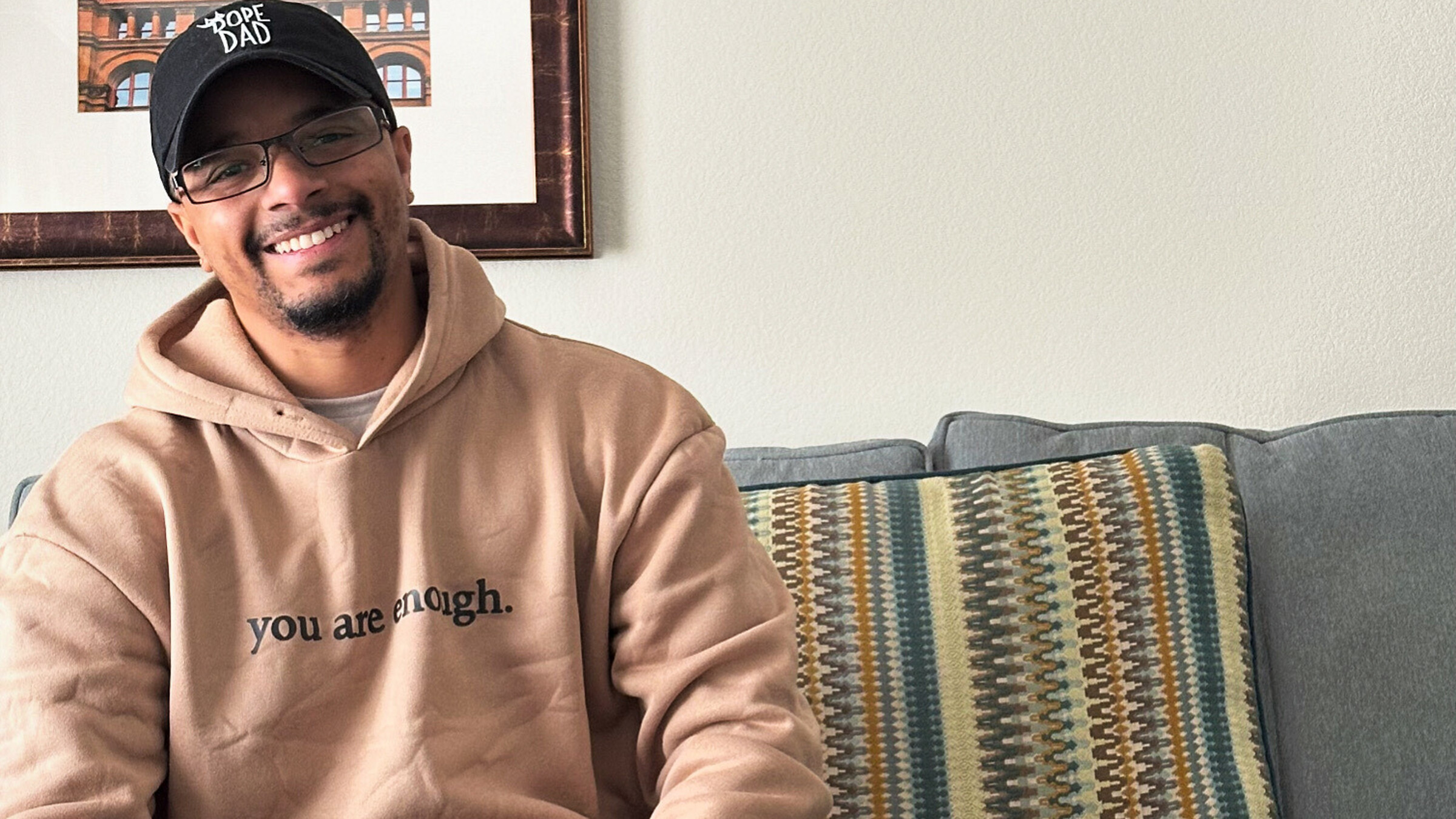 Dezjorn Gauthier
Dezjorn Gauthier
recent blog posts
December 17, 2025 | Michail Takach
December 16, 2025 | Michail Takach
December 01, 2025 | Dan Fons
The concept for this web site was envisioned by Don Schwamb in 2003, and over the next 15 years, he was the sole researcher, programmer and primary contributor, bearing all costs for hosting the web site personally.

